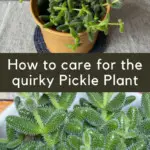Have you ever heard of a pickle plant? (No, it’s not a neverending gherkin vine, as delicious as that may sound.) I hadn’t heard either until one beckoned to me from the plant aisle of my local home goods store.
The fuzzy plant tag read, “Hug me. I’m soft.” I did, and the rest is history. The pickle plant came home with me that day, and it has been a conversation starter with my guests ever since.

What is a pickle plant?
The pickle plant’s botanical name is Delosperma echinatum and it’s a succulent native to South Africa. But if you look at it closely (and let your imagination take the lead just a little bit), you’ll see why it’s called a “pickle plant.”
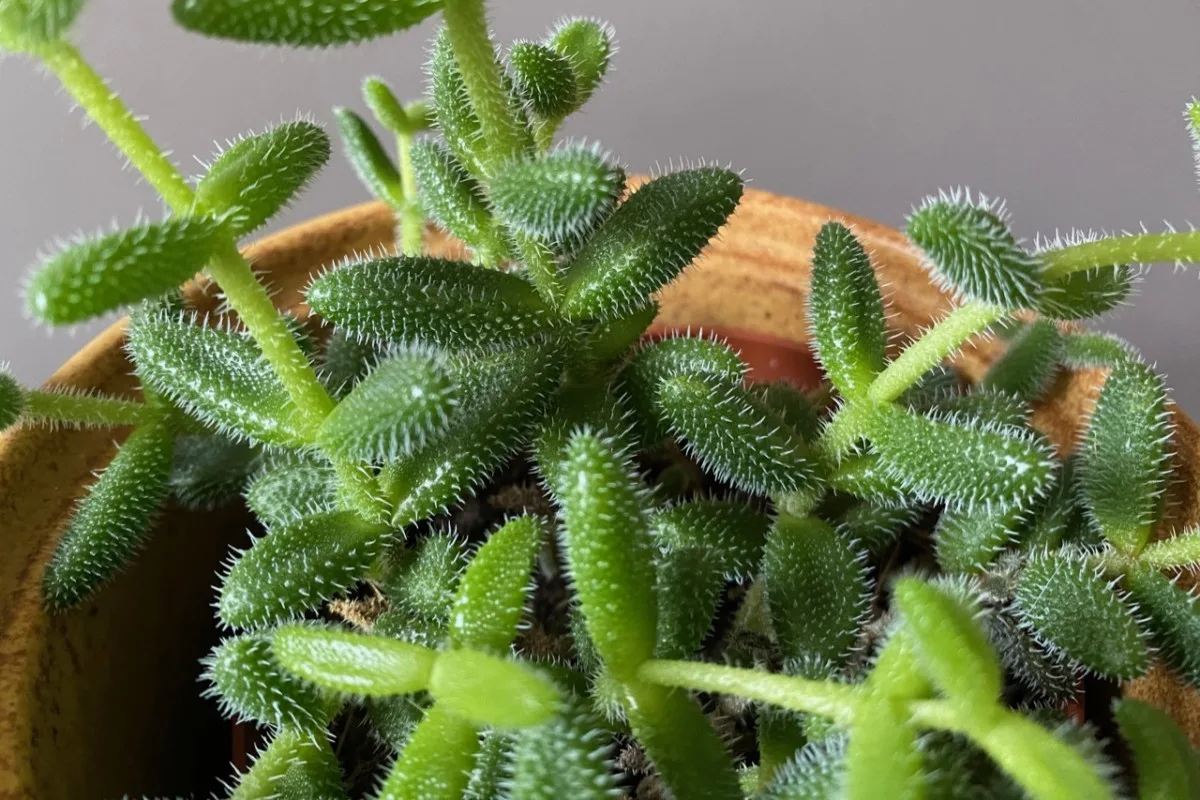
Every juicy leaf of this succulent resembles a tiny gherkin, down to the glossy skin, tiny bumps and minuscule hairs that cover it. With one exception, though – while the hairs on a cuke are prickly, those on the pickle plant are soft. Imagine gently running your fingers up and down a velvety surface. This is what the plant feels like.
When the tiny translucent hairs catch the sunlight, they look like little sparkling icicles, so another nickname for this succulent is “ice plant.” I’m still partial to “pickle plant” though.
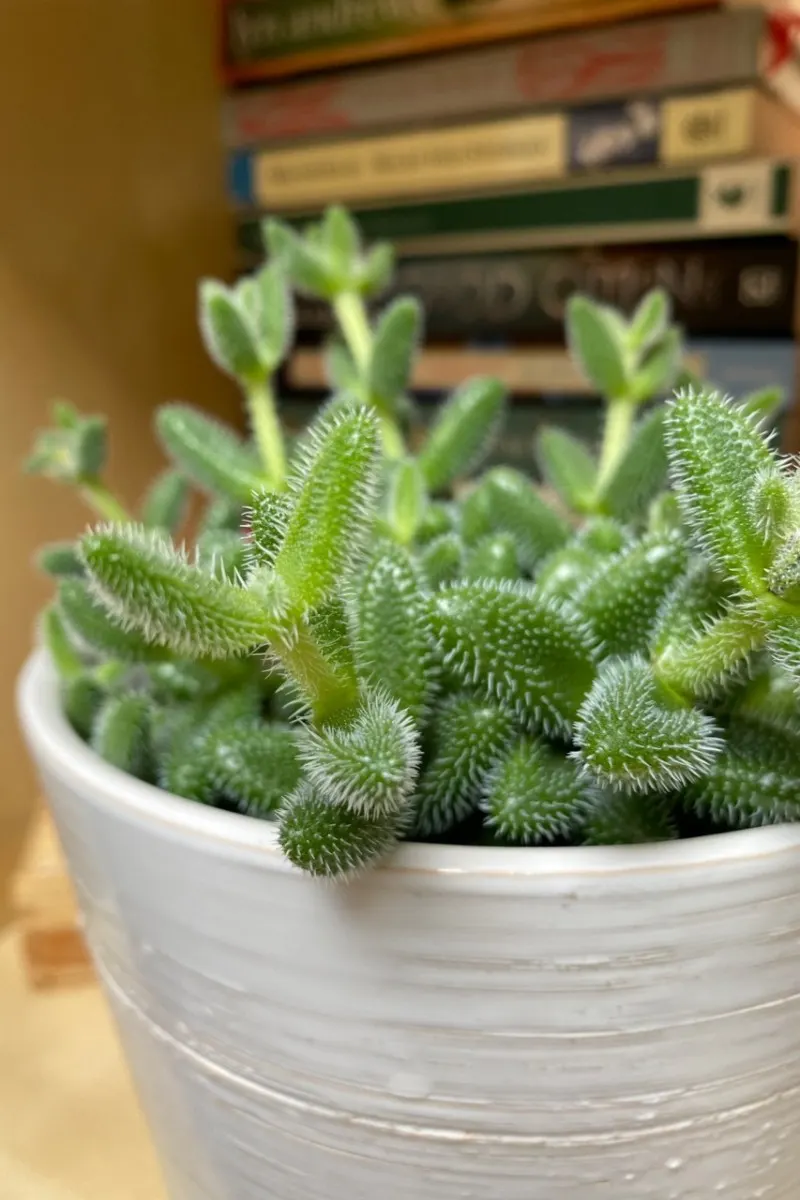
The beauty of the pickle plant is that it will stay small, reaching a maximum height of 18 inches (45 cm). In its natural habitat, it has a spreading habit, filling up horizontally rather than vertically.
Is the pickle plant easy to take care of?
Well, have you ever had any other succulent? (That’s it. That’s the question.)
If you answered yes, then congratulations! You’re well equipped to take care of a pickle plant as well. It is basically just as low maintenance as all the other succulents we keep as houseplants. It requires bright light and very little water, and it thrives on a little bit of neglect, especially if you have the tendency to overwater your plants.
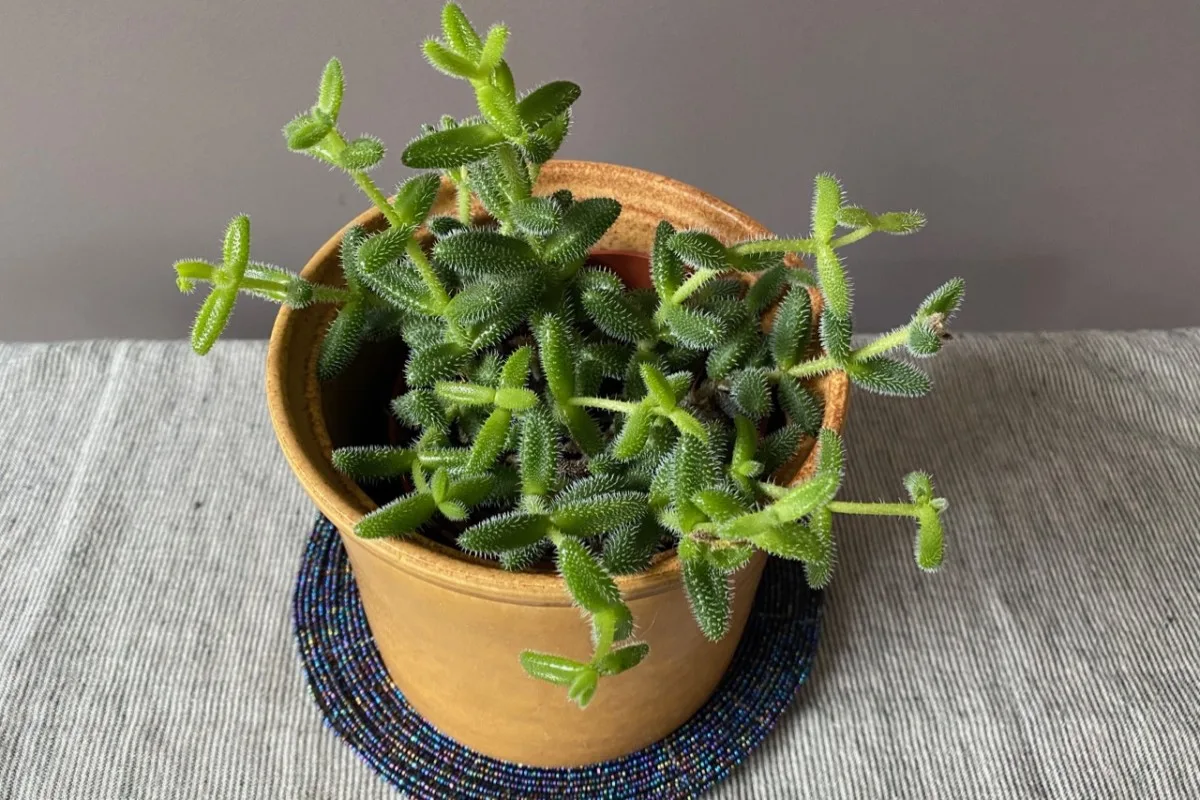
How often should I water my pickle plant?
I never like to suggest a strict watering schedule. Because watering a houseplant is not just a matter of following a strict calendar routine, but of carefully observing your plant. How often you water the pickle plant depends on factors such as:
- the temperature and humidity in your home
- the kind of soil the plant lives in
- how large your plant is
- the volume of soil in the pot
That being said, here’s what works for me. I water it about once a week in the summer and about once every three weeks in the winter. I always wait for the soil to dry before I water it, and this is roughly how long it takes for it to dry for a mid-sized pickle plant.
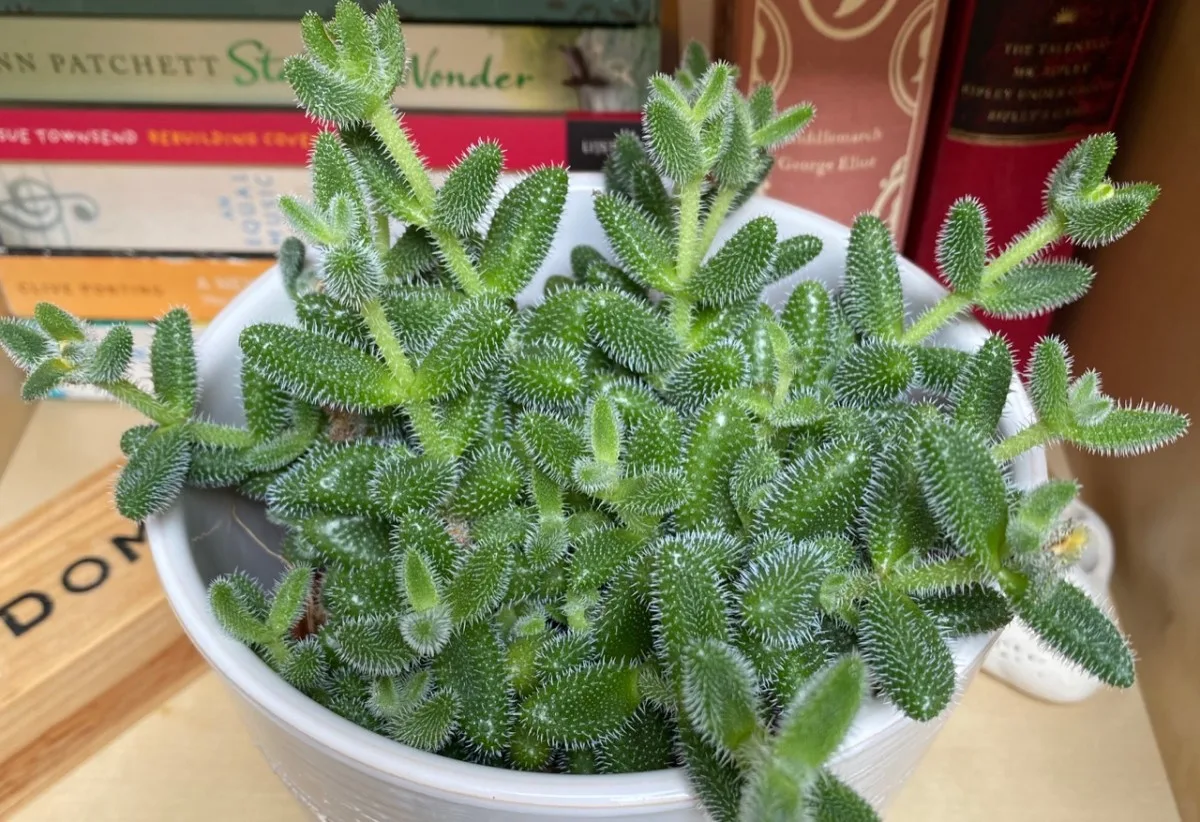
If you look at the tiny pickles on the plant, you’ll see that they’re squishy and juicy. They’re basically little water reservoirs in and of themselves. So there’s hardly any need to water it more often.
Unfortunately, about a week after I brought my first plant home, I noticed that it had probably been consistently overwatered while on display in the store. I hadn’t watered it that first week precisely because I noticed the soil was very damp. But it still developed some fuzzy mold around the lower half of the stem. Luckily, it bounced back a couple of weeks after I cleaned it up.
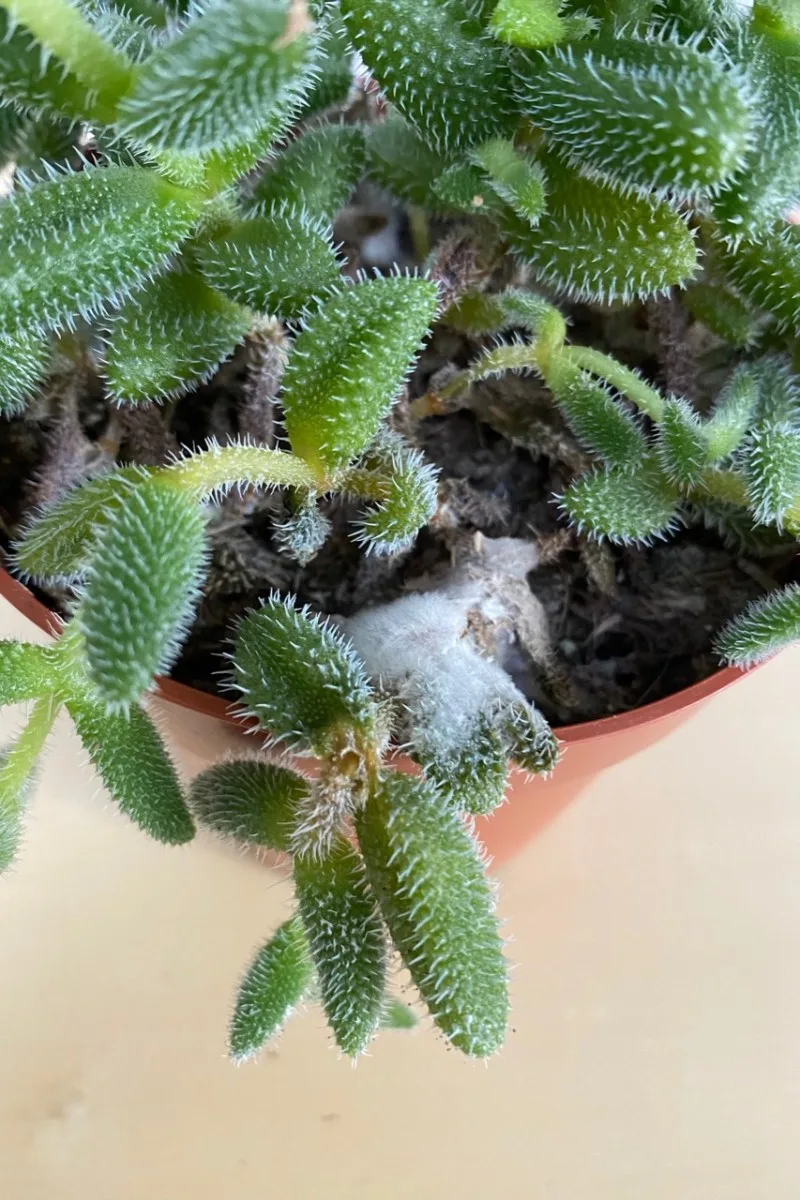
What kind of soil does my pickle plant need?
Since it’s a succulent, the pickle plant needs light, well-draining soil. Buying a pre-mixed cactus and succulent formula is the easiest way to go. But if you can’t find it ready-made, an affordable option is to mix indoor potting soil with perlite or vermiculite (about a quarter of the final mix). The addition of these porous materials will improve the aeration and drainage of the potting medium.
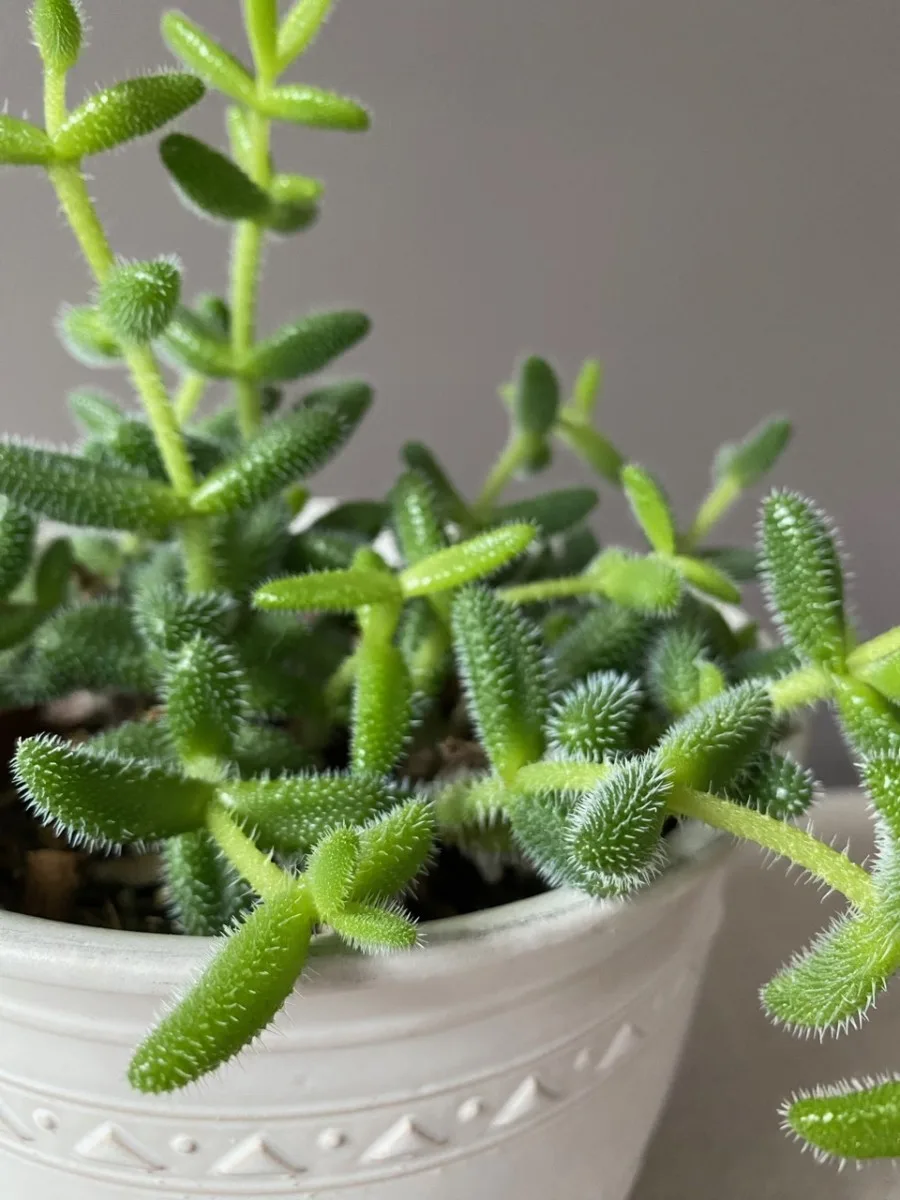
What kind of light does the pickle plant need?
The pickle plant will need as many hours of bright direct light as you can give it indoors. However, making sure the plant gets six to eight hours of sunlight a day may not always be possible when we keep succulents as houseplants. Less than that won’t kill it, but will lead to etiolation. This means that the plant grows leggy as it stretches to reach the light.
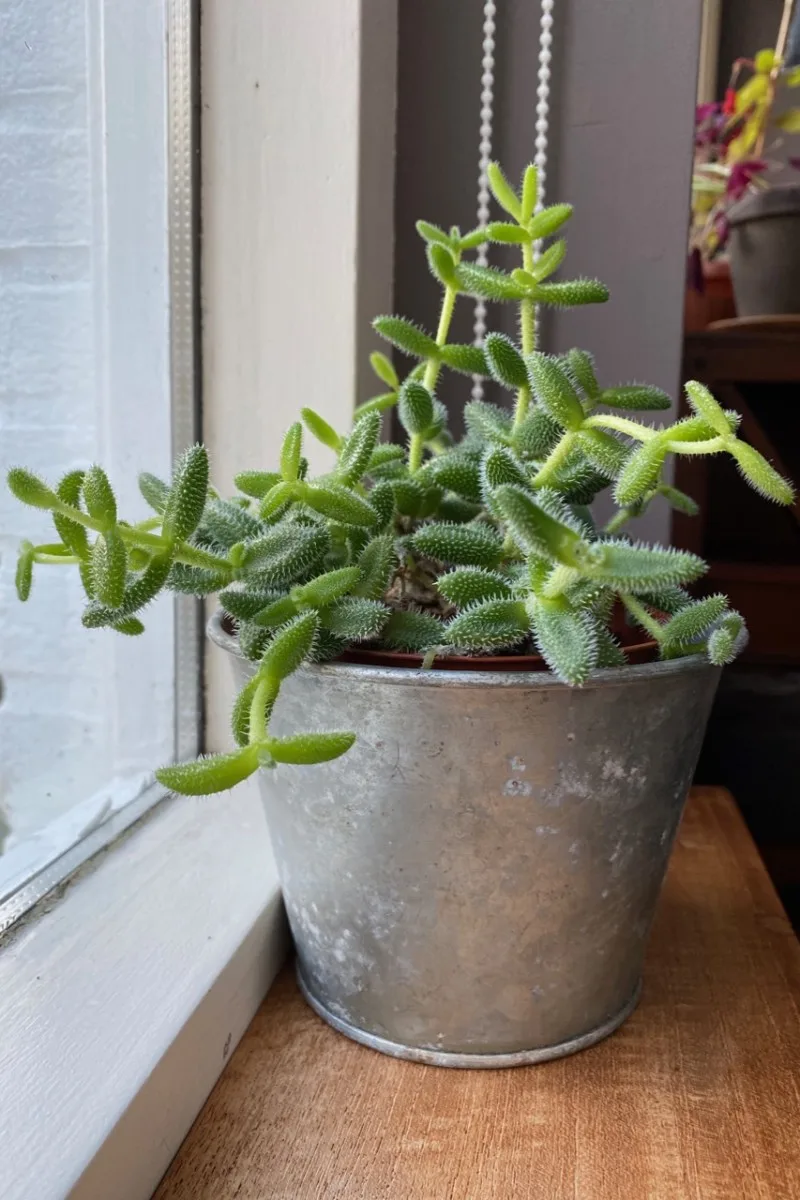
Unfortunately, I only get enough sunlight for my indoor succulents for less than two months a year, at the height of summer. This means all my houseplants, but especially my succulents, look like circus artists on stilts. I’ve learned to live with this quirk, and I much prefer it now to regular-looking succulents. Or at least that’s what I tell myself.
Learn how to propagate succulents here.
Can I move the pickle plant outdoors?
Yes, you can. In fact, the pickle plant is more tolerant to colder temperatures than other succulents. You can bring it outdoors in spring when the temperature goes above 50F (10C). You can leave it outside until mid-fall. Bring it back indoors before the temps drop again, and definitely don’t let it freeze.
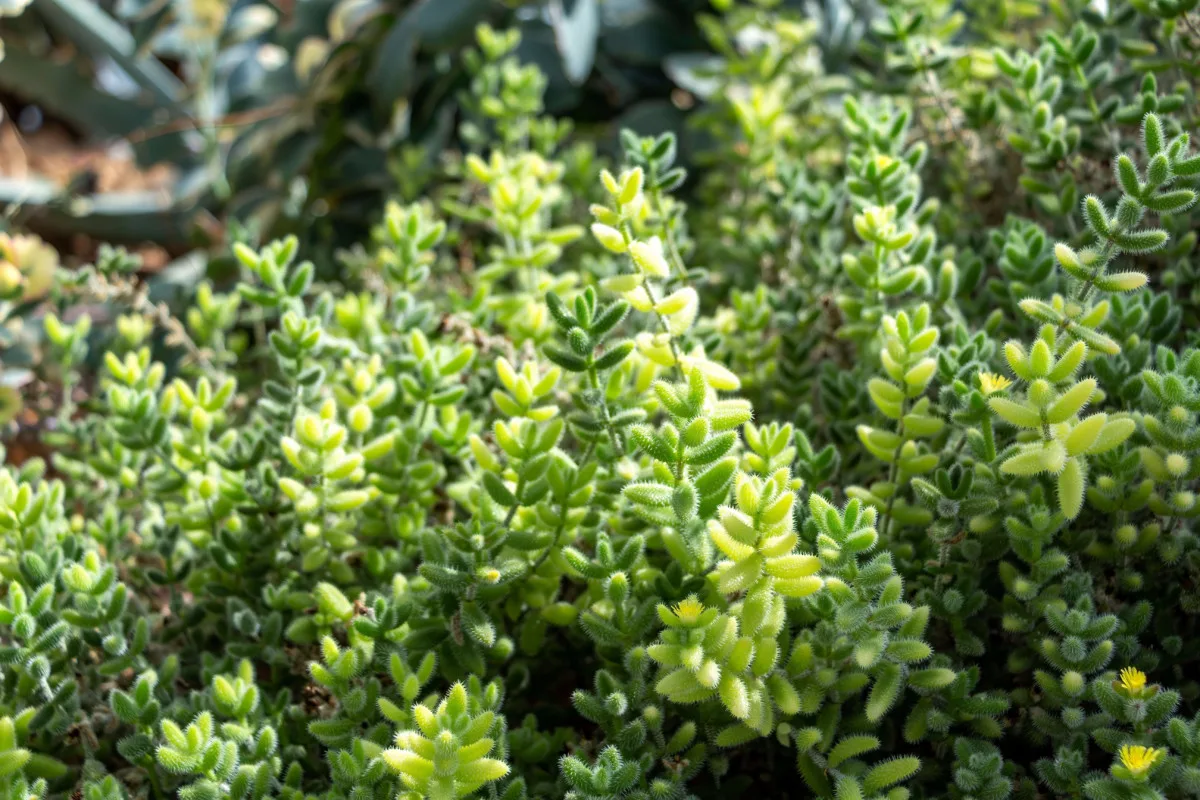
Give it a thorough check when you move it back inside to catch any hitchhiking pests that may have made their home in the pot.
If you decide to grow the pickle plant outdoors, make sure you place it in a more sheltered location. It’s ok to have it in bright direct light indoors, but the rays of the sun may be too strong outside in the middle of summer.
Does the pickle plant flower?
Yes, the pickle plant does produce flowers in the spring and summer, but don’t expect a showy display. The yellow blooms of this succulent resemble very small daisies that stay open for up to a month indoors. Outdoors it will stay in bloom longer.
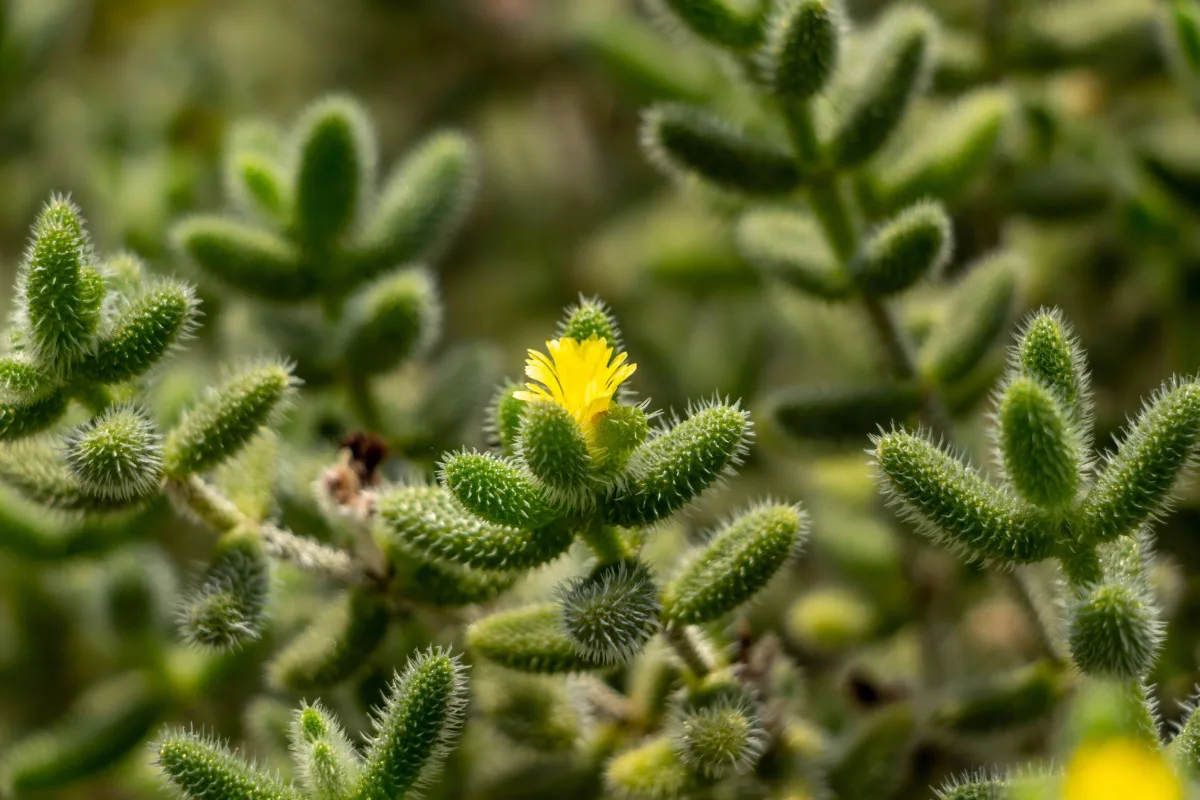
Your plant will bloom more profusely if you allow it to enter dormancy the previous winter. This means allowing it to dry out between watering sessions and keeping it in a cooler location.
Whether yours flowers or not, the appeal and beauty of the pickle plant is all due to its funny-looking leaves. Guaranteed to be a conversation starter with other plant lovers.
If you love unusual plants, you’ll want to check out even more bizarre plants to bring home. Or maybe you’re looking for something rare and hard to come by.

Get the famous Rural Sprout newsletter delivered to your inbox.
Including Sunday musings from our editor, Tracey, as well as “What’s Up Wednesday” our roundup of what’s in season and new article updates and alerts.


